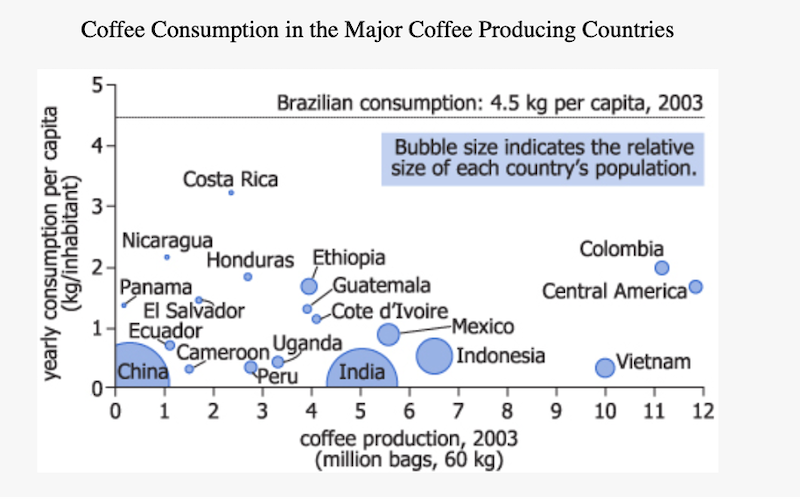题库 / EAOfficialPractice-MSR-124
Discussion
The passage is based on a document published in 2005.
The rate of growth in global coffee consumption has been falling behind the rate of growth in global production, creating a scenario of recurring price crises that take a heavy toll on coffee producing countries. Programs to expand coffee consumption in coffee producing countries can improve the situation and make the cyclical crises less acute.
In mature markets, costs to increase consumption are probably higher than in emerging markets, such as Brazil, the largest coffee producer. The case of Brazil shows that probably the highest returns for institutional investments to develop coffee consumption are to be found in the emerging markets of coffee producing countries. A Brazilian institutional investment valued at US$25 million in 10 years brought about an increase in yearly coffee sales worth 40 times as much. Promotion of coffee consumption in coffee producing countries is likely to represent the best investment of scarce promotion resources because of this multiplier effect. There are huge gaps in per capita consumption between Brazil and many other smaller producers, some (such as Indonesia) with large populations.
It is often argued that the Brazilian promotion program worked only because there was a marked income increase within the same period. But income increases alone, without promotion, are not sufficient to increase coffee consumption. Actually, for the 20 years up to 2003 in Brazil, it was only during the period 1993 to 1998 that coffee consumption increased as income was increasing.
First graph
This graph shows the gaps between the quantities of coffee produced and the quantities of coffee consumed in the coffee producing countries. Only consumption is shown for Brazil; its 2003 production was much higher than that of Central America.

Second graph
Assuming each of the following statements is true, select Yes if the statement helps explain trends shown in the second graph in a way that is consistent with information in the passage. Otherwise, select No.
| YES | NO | |
|---|---|---|
|
|
|
Brazil’s 10-year program to promote domestic coffee consumption through institutional investment began in 1993.
|
|
|
|
Worldwide demand for coffee began to fall in 1999, resulting in economic recessions in most coffee producing countries.
|
|
|
|
The trend in per capita consumption of coffee in Brazil between 1986 and 2003 is indicative of the trend in the global per capita rate of production.
|